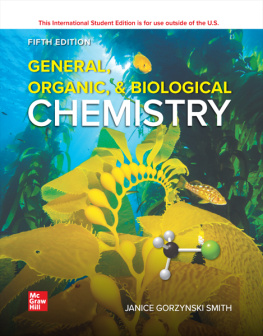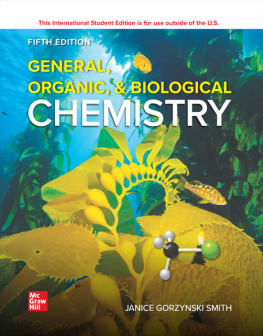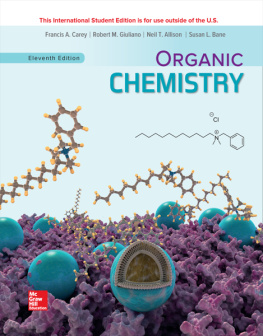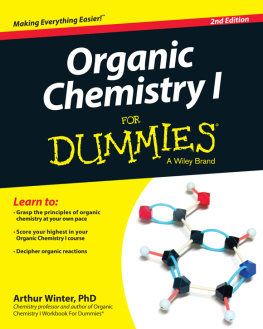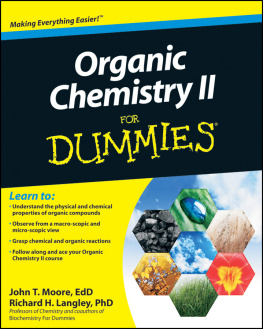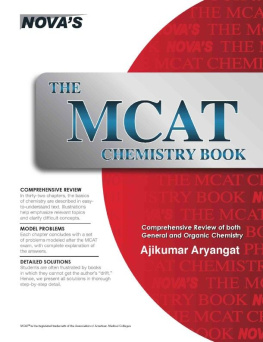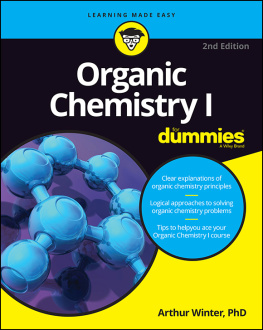Allan D. Headley - Organic Chemistry: Concepts and Applications
Here you can read online Allan D. Headley - Organic Chemistry: Concepts and Applications full text of the book (entire story) in english for free. Download pdf and epub, get meaning, cover and reviews about this ebook. year: 2019, publisher: Wiley, genre: Children. Description of the work, (preface) as well as reviews are available. Best literature library LitArk.com created for fans of good reading and offers a wide selection of genres:
Romance novel
Science fiction
Adventure
Detective
Science
History
Home and family
Prose
Art
Politics
Computer
Non-fiction
Religion
Business
Children
Humor
Choose a favorite category and find really read worthwhile books. Enjoy immersion in the world of imagination, feel the emotions of the characters or learn something new for yourself, make an fascinating discovery.

- Book:Organic Chemistry: Concepts and Applications
- Author:
- Publisher:Wiley
- Genre:
- Year:2019
- Rating:5 / 5
- Favourites:Add to favourites
- Your mark:
- 100
- 1
- 2
- 3
- 4
- 5
Organic Chemistry: Concepts and Applications: summary, description and annotation
We offer to read an annotation, description, summary or preface (depends on what the author of the book "Organic Chemistry: Concepts and Applications" wrote himself). If you haven't found the necessary information about the book — write in the comments, we will try to find it.
Organic Chemistry: Concepts and Applications — read online for free the complete book (whole text) full work
Below is the text of the book, divided by pages. System saving the place of the last page read, allows you to conveniently read the book "Organic Chemistry: Concepts and Applications" online for free, without having to search again every time where you left off. Put a bookmark, and you can go to the page where you finished reading at any time.
Font size:
Interval:
Bookmark:
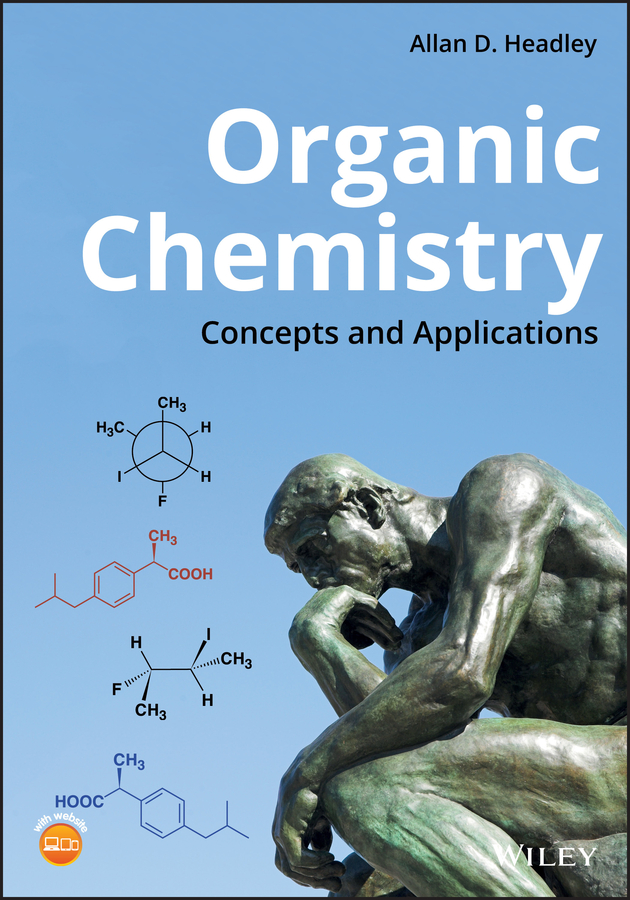
- Chapter 1
- Chapter 2
- Chapter 3
- Chapter 4
- Chapter 5
- Chapter 7
- Chapter 11
- Chapter 13
- Chapter 14
- Chapter 15
- Chapter 17
- Chapter 18
- Chapter 20
- Chapter 1
- Chapter 2
- Chapter 3
- Chapter 4
- Chapter 5
- Chapter 6
- Chapter 8
- Chapter 10
- Chapter 11
- Chapter 12
- Chapter 13
- Chapter 14
- Chapter 15
- Chapter 16
- Chapter 17
- Chapter 18
- Chapter 19
- Chapter 20
Allan D. Headley
Texas A&M University
Commerce, Texas, USA

This edition first published 2020
2020 John Wiley & Sons, Inc.
All rights reserved. No part of this publication may be reproduced, stored in a retrieval system, or transmitted, in any form or by any means, electronic, mechanical, photocopying, recording or otherwise, except as permitted by law. Advice on how to obtain permission to reuse material from this title is available at http://www.wiley.com/go/permissions.
The right of Allan D. Headley to be identified as the authors of this work has been asserted in accordance with law.
Registered Office
John Wiley & Sons, Inc., 111 River Street, Hoboken, NJ 07030, USA
Editorial Office
111 River Street, Hoboken, NJ 07030, USA
For details of our global editorial offices, customer services, and more information about Wiley products visit us at www.wiley.com.
Wiley also publishes its books in a variety of electronic formats and by printondemand. Some content that appears in standard print versions of this book may not be available in other formats.
Limit of Liability/Disclaimer of Warranty
In view of ongoing research, equipment modifications, changes in governmental regulations, and the constant flow of information relating to the use of experimental reagents, equipment, and devices, the reader is urged to review and evaluate the information provided in the package insert or instructions for each chemical, piece of equipment, reagent, or device for, among other things, any changes in the instructions or indication of usage and for added warnings and precautions. While the publisher and authors have used their best efforts in preparing this work, they make no representations or warranties with respect to the accuracy or completeness of the contents of this work and specifically disclaim all warranties, including without limitation any implied warranties of merchantability or fitness for a particular purpose. No warranty may be created or extended by sales representatives, written sales materials or promotional statements for this work. The fact that an organization, website, or product is referred to in this work as a citation and/or potential source of further information does not mean that the publisher and authors endorse the information or services the organization, website, or product may provide or recommendations it may make. This work is sold with the understanding that the publisher is not engaged in rendering professional services. The advice and strategies contained herein may not be suitable for your situation. You should consult with a specialist where appropriate. Further, readers should be aware that websites listed in this work may have changed or disappeared between when this work was written and when it is read. Neither the publisher nor authors shall be liable for any loss of profit or any other commercial damages, including but not limited to special, incidental, consequential, or other damages.
Library of Congress CataloginginPublication Data
Names: Headley, Allan D., 1955 author.
Title: Organic chemistry : concepts and applications / Allan D. Headley (Texas A&M University).
Description: First edition. | Hoboken, NJ : Wiley, 2020. | Includes bibliographical references and index. |
Identifiers: LCCN 2019018485 (print) | LCCN 2019020628 (ebook) | ISBN 9781119504627 (Adobe PDF) | ISBN 9781119504672 (ePub) | ISBN 9781119504580 (pbk.)
Subjects: LCSH: Chemistry, OrganicTextbooks.
Classification: LCC QD251.3 (ebook) | LCC QD251.3 .H43 2020 (print) | DDC 547dc23
LC record available at https://lccn.loc.gov/2019018485
Cover Design: Wiley
Cover Images: Background Sean Nel/Shutterstock, Chemical images courtesy of Allan D. Headley
This book is written from the students' perspective. Addressing the questions that students of organic chemistry typically have, the errors they typically make, along with some fundamental misconceptions that they typically formulate, are all the focus of this textbook. A major difference between this textbook and the majority of other textbooks is with the presentation of the information. The objective of this textbook is to develop the student's ability to think critically and creatively and equally important to improve the problemsolving skills of students. The content information is presented in such a way to assist students develop these skills. These are skills critically needed for students of science as they prepare for today's workforce. This approach also gives students the assurance that their opinions and thoughts are valued. As a result, students will become confident as they master the subject material. With this approach, students will quickly realize that it is in their best interest to develop these skills instead of relying on memorization as they approach this course and other science courses. The development of these skills will eventually prepare students to become better scientists. The problems in each chapter and at the endofchapter problems are designed to get students to solve problems by using their critical thinking skills.
For the majority of textbooks, the vast amount of organic chemistry information is dealt with primarily by categorizing the information into functional group categories. Thus, each of the approximately 20 chapters of a typical organic chemistry textbook is basically an exhaustive study of compounds with the different functional groups found in organic chemistry. This approach does not lend itself to aid students understand and master the vast content information of organic chemistry; this approach only presents large categories of information for students to handle. As a result, some students tend to rely on memorization instead of developing a scientific approach to handle all the information presented. In this textbook, the vast amount of organic chemistry information is not presented by functional group categories, but instead by reaction types; this approach presents much fewer categories of information for students to handle. In this textbook, the content information is divided into eight general categories based on reaction types, and not functional groups. An overview of the eight reaction types that are covered in the textbook is covered in . Since the majority of these types of reactions are the basic reactions covered in general chemistry, this approach provides a much better method to bridge the gap between general chemistry and organic chemistry. For example, there is a chapter that covers oxidation, a concept covered in general chemistry, but in this textbook, the concept of oxidation is applied to organic molecules that have different functional groups. Thus, after students have learned the concept of oxidation, they will be better prepared to apply that concept to a wide variety of organic molecules. The first part of the textbook covers relevant concepts of chemistry and the later sections deal with the applications of the concepts learned to the reactions of a wide cross section of molecules with different functional groups, hence the title of the textbook
Next pageFont size:
Interval:
Bookmark:
Similar books «Organic Chemistry: Concepts and Applications»
Look at similar books to Organic Chemistry: Concepts and Applications. We have selected literature similar in name and meaning in the hope of providing readers with more options to find new, interesting, not yet read works.
Discussion, reviews of the book Organic Chemistry: Concepts and Applications and just readers' own opinions. Leave your comments, write what you think about the work, its meaning or the main characters. Specify what exactly you liked and what you didn't like, and why you think so.

